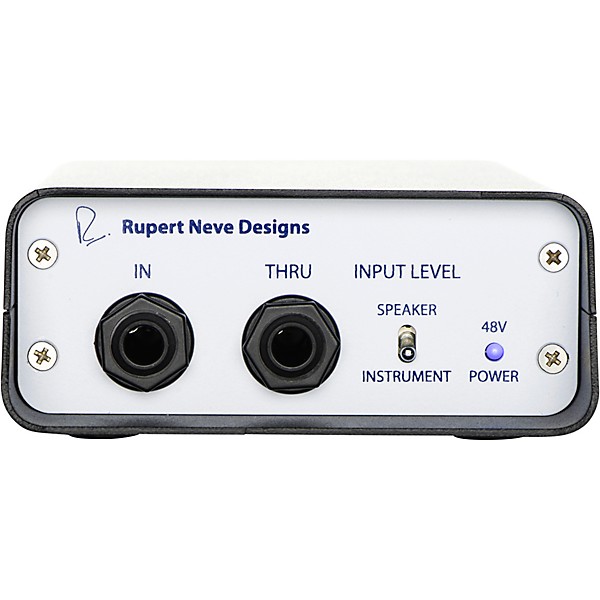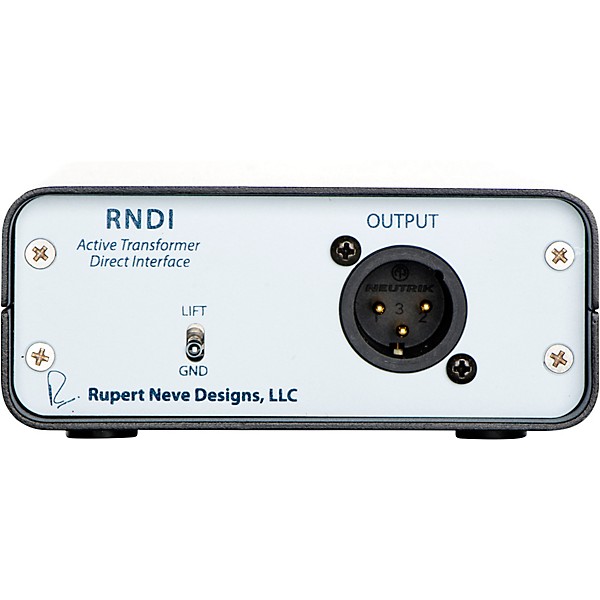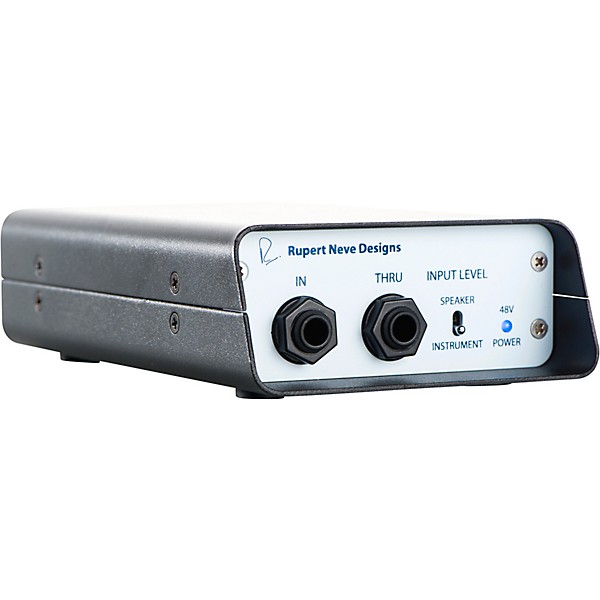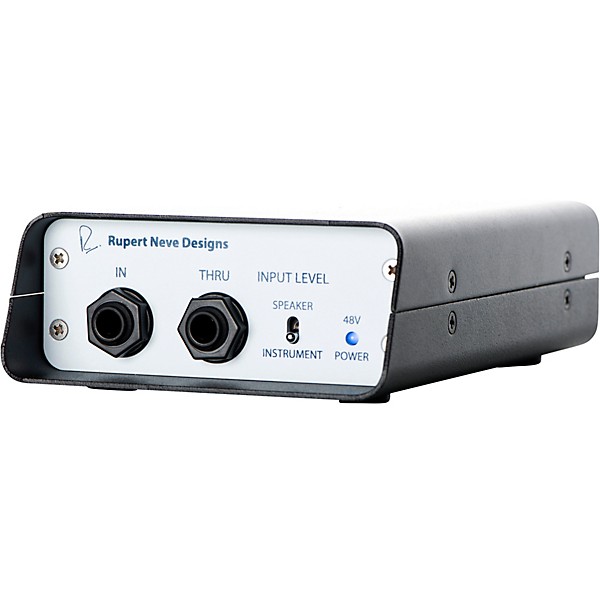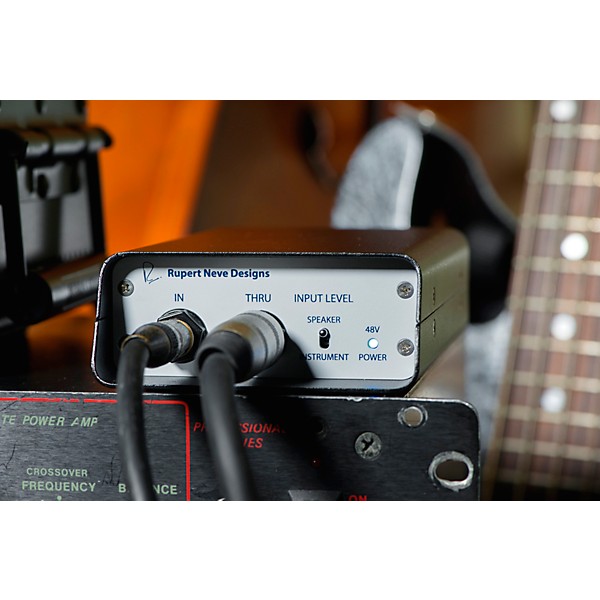- Popular Brands
Rupert Neve Designs RNDI Active DI Box

 Description
Description
The Development
After coming into existence during an experimentation with new transformer designs, the RNDI was fine-tuned over a series of listening tests against the the most popular high-end D.I.s available. It was in these tests where the RNDI always seemed to add another dimension to the sound and bring the instruments to life. The lows felt richer, deeper and fuller, and the highs had outstanding clarity without any added harshness. Most importantly, the design team noted: “As musicians, the RNDI consistently stood out as the D.I. we wanted to play through.”The Elements of Direct Tone
The RNDI’s signature sound is the product both of new custom Rupert Neve-designed transformers and Class-A biased, discrete FET amplifiers. The carefully orchestrated union of these two elements is key to the RNDI’s unique response.The transformers provide superior passive isolation while adding musical harmonics and dimension to the sound. The low-impedance, transformer-balanced output excels at driving long cable runs, and performance is immensely consistent regardless of the connected equipment. This is very important for both live and studio environments where the unamplified signal may travel almost 100' before hitting an amplifier. In other designs, these high-capacitance lines cause major reductions in high frequencies, however the output stage of the RNDI unrivaled at handling long runs with minimal losses.
The Class-A and discrete FET amplifier in the RNDI is powered by industry-standard 48V phantom power on the XLR connection, and creates a very high-impedance input of two megaohms that ensures consistent performance with a wide variety of instruments. The significance of the RNDI’s class-A design is that there is no crossover distortion added to the signal, which can add upper-order odd harmonics to the sound that are musically dissonant in nature. With the RNDI, the overwhelming majority of harmonic content is 2nd order (octave) with some 3rd order present (fifth above octave). These musically relevant harmonics—present in subtle amounts—actually add to the richness of the original signal. The discrete aspect of the RNDI design means there are no ICs or digital components that can have negative effects on the tone.
These efforts to harmonize the performance of the transformer and the FET amplifier have resulted in the RNDI’s extremely well-balanced response. The low-end tonality is thick and powerful, with frequency response several octaves below audibility. The high end is clear, present and smooth, with a frequency response extending beyond 100kHz. The phase coherence is unrivaled at all frequencies, which keeps the sound as natural as possible—especially vital when blending the direct signal with a microphone capture of the same source.
Game-Changing Headroom
In instrument mode, the RNDI’s high-input headroom of +21.5dBU is capable of handling not only instruments, but professional, line-level sources like interfaces, CD players and drum machines without a pad. This allows the RNDI to serve as a way to "Re-Preamp" any previously recorded track using your interface and a desired preamp. To do this, simply connect a channel output of the interface to the input of the RNDI and connect the RNDI’s output to the preamp and engage 48V. By “Re-Preamping,” you can apply the tone of another preamp to the source and more accurately automate or control the drive level on the preamp.In speaker mode, the RNDI can handle the screaming output of a 1,000-watt power amplifier (92 Vrms or 266Vp-p) to capture the full tone of the instrument, preamplifier, EQ, inserts and the amplifier’s output stages before it hits the speakers. This technique allows the engineer to avoid any bleed in a live environment and any unwanted tone added by the speaker cabinet or microphone. When used with modern speaker emulation plug-ins, this technique allows the engineer to take advantage of both the flexibility of digital modeling and the superior non-linear response of an actual analog amplifier.
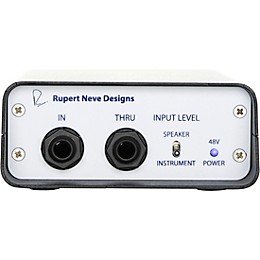

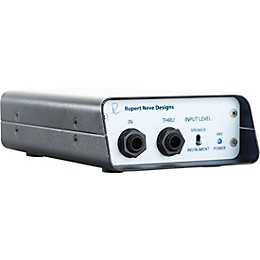
Featured Articles
 Reviews
Reviews
5
4 Reviews
100%
of respondents would recommend this to a friend
- Performances4
- Amateur Recording3
- Home Studio3
- Professional Recording3
- Outdoor Events / Games1
- Professional Musician3
- Experienced1
- Easy To Use4
- Good Power Output4
- Good Audio3
- Versatile3
- Professional Functions2
Reviewed by 4 customers
Definitely would buy again
Verified Buyer
submitted8 months ago
byBen
fromKansas City, KS
Submitted as part of a sweepstakes
Used as a DI on stage and in studio
It's a Neve!
submitted4 years ago
byRob
fromAlbuquerque
I bought a second RNDI to interface stereo stomp boxes to a Yamaha MG10XU. The pairing delivered a sonic punch. Active and passive pickup guitars equally sound phenomenal. My passive DI was binned.
RNDI'S ROCK
submitted4 years ago
byJason S.
fromTX
Neve stuff rocks period. These are very high quality sound devices and can be used for near anything. Adds great thickness to low ends and smooth think output.
It seems expensive until you hear it
submitted5 years ago
byBen S
fromNYC
I've been using this to record guitar and bass direct in parallel with a mic'd amp, and it's changed my whole game. Putting your signal through Neve transformers is exactly what your studio needs. For the amount this has just boosted my guitar and bass game, I'd have paid double what I paid. It seems silly to spend $270 on a DI, but when you hear it, you'll think it was silly that RND is charging so little.
- Previous
- 1
- Next
 Q&A
Q&A
Have a question about this product? Our expert Gear Advisers have the answers.
No results but…
You can be the first to ask a new question.
It may be Answered within 48 hours.


